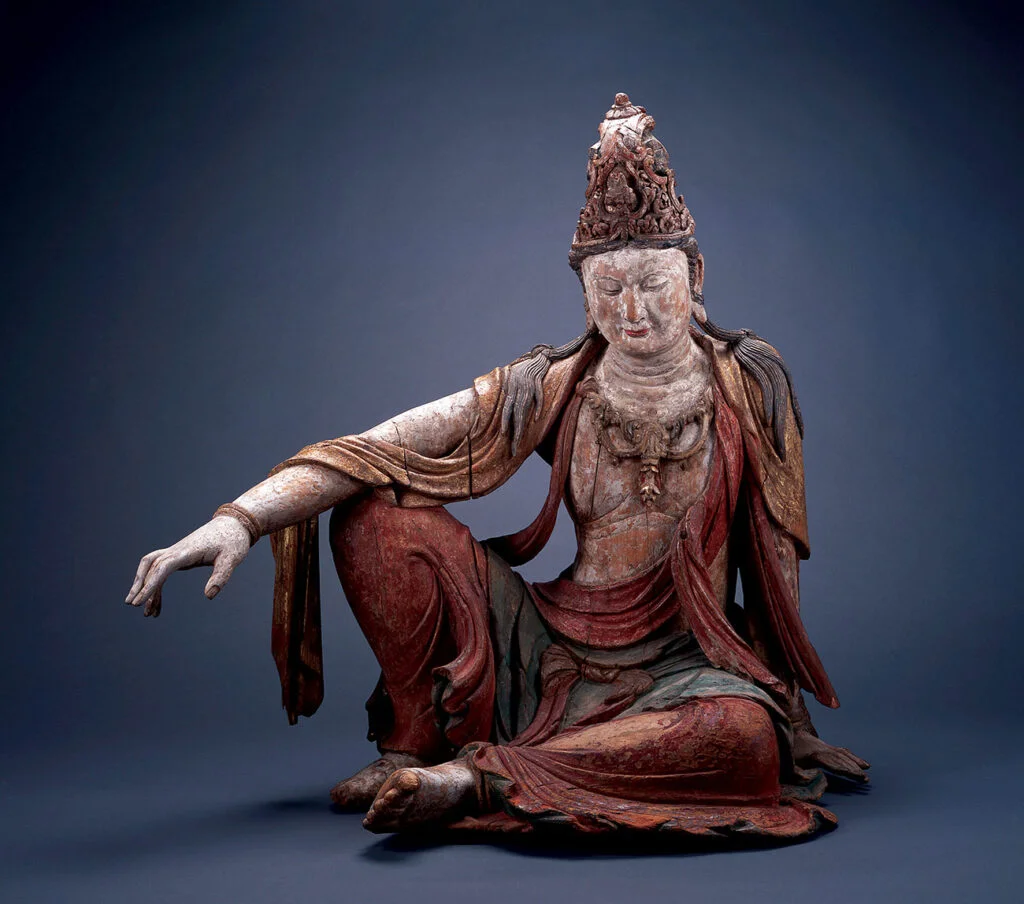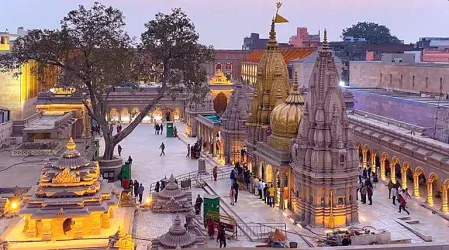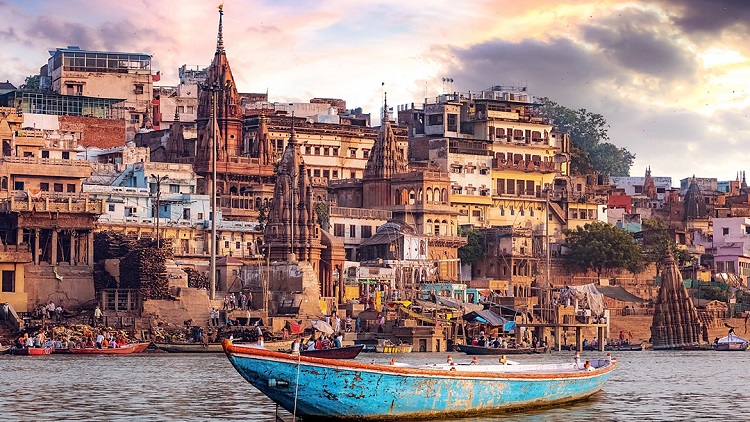Varanasi, or Kashi, is frequently seen as India’s spirituality capital. With a history of over thousands of years, the city is among the most ancient cities in the world that has been persistently belonged to. Varanasi historical past is of great importance due to its strong ties to Hinduism , Buddhism, and a myriad of other historical and religious traditions .In this article, we explore the journey of Ancient Varanasi, its historical landmarks, the Kashi Vishwanath Temple history, the impact of Varanasi under British rule, the city’s role during the Mughal period, and the influence of the Varanasi ghats on its spiritual identity. Each of these facets contributes to the rich, timeless story that defines Varanasi.
Ancient Varanasi: The Bedrock of Spirituality and Knowledge
Known as Kashi, ancient Varanasi possesses a legendary status within Indian history. Its origins are referenced in the Sacred Texts and various ancient writings, establishing it as one of the most revered cities in Hinduism’s. Lord Shiva is thought to have founded Ancient Varanasi as his divine residence, and over the ages, it evolved into a hub of spiritual illumination, cultural interchange, and education.
Kashi’s historical past extends back to at least 1000 BCE, as mentioned in the Sanskrit text, the which refers to it as a city center of light. In pre-historic moments, Varanasi served as a knowledge-based center whereas scholars and philosophers from across India gathered to exchange knowledge. Historical Varanasi flourished as a cultural hub, blending religiousness and comprehension, attracting everyone from aspirants to the saints.
Kashi has become intimately linked to spiritual and material prosperity throughout history. The Indian civilizations were significantly shaped by the city’s architecture, temples, and educational structures.
Varanasi served not only as a hub for devotional journey but also as an educational center where the Vedic texts were reviewed and advancements have been made in fields such as medical technology, astronomy, and numerical science.
Kashi Vishwanath Temple History: A Symbol of Resilience and Devotion
Kashi: The city of moksha embodies not merely a destination, but a soulful journey. Kashi, esteemed as one of the oldest living cities globally, occupies a timeless position in India’s spiritual heart. Varanasi’s history is deeply connected to legendries, religion, and philosophy, establishing it as a unique cultural and emotional landmark.
According to Hinduism tradition, Kashi: The city of moksha is thought to provide expulsion from the cycle of reincarnation. This holy city is visited by pilgrims from around the world, who wish to attain spiritual independence. It is assumed that here, the universe-based deity Lord Shiva whispers the mantra of redemption into the ears of those who are dying, thus according to them the immortality.
Varanasi has a history of over 3,000 years, with mentions in ancient texts like the Rigveda and accounts from Chinese travelers such as Xuanzang. Throughout history, the city has witnessed the ascendance and decline of empires, the inception of Buddhism in nearby Sarnath, and the development of Indian theology, art, and rhythms.
Varanasi Historical Places: A Journey Through Time
As we investigate into the history-rich sites of Varanasi, we come across not just religious monuments but in addition architectural wonders that tell the story of the city’s past.
The city boasts many important sites, all engaging with the stories of ancient and medieval India. Notable examples of include the Kashi Vishwanath Temple, Sarnath temple, and the famous Varanasi ghats.
Kashi Vishwanath Temple History
The Kashi Vishwanath Temple is one of the most notable historical landmarks in Varanasi. The temple, devoted to Lord Shiva, has been a key component of Varanasi’s spiritual and cultural identity for many for centuries. The heritage of the Kashi Vishwanath Temple goes back to ancient times, although its structure has been reconstructed several times throughout history.
It was thought that the originally temple was destroyed and rebuilt during different invasions. The contemporary Kashi Vishwanath Temple is situated at a location thought to be where Lord Shivaji resided. Over the generations, it evolved into a substantial Hinduism sacred site that draws numerous millions of worshippers every year. As hometown to the Kashi Vishwanath Holy Courtyard, one of India’s most revered temples, Varanasi acts as a religious center for worshippers all over the world.
Sarnath: Buddha’s First Sermon

Sarnath is a different significant historical site in Varanasi, situated a short distance from the city center. This location was the site of Lord Buddha’s first sermon after comprehension, which initiated the Buddhism faith. This hilltop area features various historical sites, one of among them is the Dhamekh Stupa that honors this important celebration.
During the Sarnath Buddha’s first sermon, essential instructions such as the Four Noble Beliefs and the Eight-fold Path were announced, forming the basis of Buddhism. This event occurrence represented a watershed moment in spiritual history, and Sarnath emerged as a prominent Buddhism journey site. Buddhism’s connection to the city adds depth to Varanasi’s heritage artwork and enhances its religious importance.
Varanasi Ghats: The Heart of the City
One of the city’s most recognizable aspects are the Varanasi ghats. These steps that descend to the Ganges River utilize more purposes than essentially bathing or carrying out rituals; they represent the core nature of existence and death. The heritage of the Varanasi valleys is intimately linked to the city’s traditions and spirituality legacy. The hills of Varanasi city, such as Dashashwamedh Devi Ghat, Manikarnika Ghats, and Assi Ghat, are well-known for their specific worth.
For instance, Manikarnika Ghat serves as the main cremation ghat for Hindus to conduct last rites, as they hold the belief that cremation at this location liberates the humanity from the cycle of birth and death. Millions of people travel to Varanasi to partake in religious ceremonies on the ghats, looking for protection and emotional renewal, making this ritual an integral part of the city’s pilgrimage tradition.
The Role of Kashi Kings and Rulers in Shaping Varanasi’s Legacy

The Kashi’s monarchs and leaders were instrumental in safeguarding the spiritual and cultural core of Varanasi. These individuals’ rulers, recognized for their dedication to morality and backing of spiritual organizations, turned Kashi into a flourishing hub of learning and faithfulness. Since antiquity, the monarchs and leaders of Kashi have supported saints, scholars, and artists, establishing the city as a center of Vedic education and conventional ceremonies.
Throughout times of foreign interference and social upheaval, the Kashi kings and monarchs maintained their role as defenders of Hindu temples and rituals. They financed the rebuilding of sacred sites and aided in the revival of ancient practices that characterize Kashi’s distinctive spiritual ambiance. Thanks to their commitment, the city maintained its religious authority.
During the pre-colonial and colonial eras, the Kashi kings and rulers played a crucial role in restoring temple architecture and bolstering pilgrimage networks. Their aspiration for a spiritually enriched Kashi continues to resonate in the city’s temples, ghats, and sacred ceremonial customs.
Kashi Vishwanath Temple History: An Emblem of Tenacity and Faith
Situated at in Varanasi, Uttar Pradesh, the Kashi Vishwanath Temple is among the holiest shrines devoted to Lord Shiva. It is referred to as the “Golden Temple” because of its structure and spire, which are plated with platine. It is located on the western bank of the sacred Ganges River. Although the temple originated in historical times, it has faced multiple destroyed and reconstructions, serving as a symbol of the steadfast devotion of Hindu participants.
The originally temple is believed to have been built several generations ago. In 1194, Qutb-ud-din Aibak executed its initial demolition. It was reconstructed multiple occurrences by various Hindu rulers, but was numerous times broken down, with the most profound significant destruction occurring in 1669 at the hands of the Mughal sultan Aurangzeb, who erected the Gyanvapi Fort Mosque on its location.
Despite these challenges, the attitude of dedication held firm. In 1780, Ahilyabai Holkar, the princess of Indore, reconstructed the temple at its present site; It subsequently attracts tens of millions of devout followers each year.
The temple serves not only as a religious monument but also as a symbol of intellectual resilience and the enduring faith of people amidst centuries of change. It symbolizes the triumph of devotion over destructions and serves as a potent emblem of India’s abundant cultural and religious heritages.
Conclusion: Varanasi—A City of Enduring Legacy
Varanasi’s history embodies durability, devotion, and a wealth of culture. With its origins in Ancient Varanasi and the magnificence of the Kashi Vishwanath Temple history, the profound lessons of the Sarnath Buddha’s first sermon, and the sacred rituals conducted on the Varanasi hills, the city continues to embody spiritual respectfulness.
Its significance of in the time of the Mughal Empire and British imperial rule helped form India’s cultural and political landscape. Today, Varanasi stands as a symbol of India’s religious and historically legacy, a city that persistently to inspire pilgrims, scholars, and emotional seekers from around the globe.
The history of Varanasi is more than a record of past events; this is a lively and continuously developing spiritual expedition that affects the hearts of countless individuals. Encompassed by its temples, ghats, and sacred rituals, Varanasi stands as an eternal city of sunshine, perpetually brightened by the divine intimacy of Lord Shiva and the guidance of the River Ganga Waterway.





